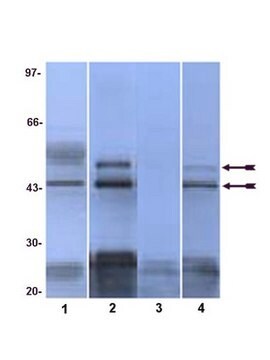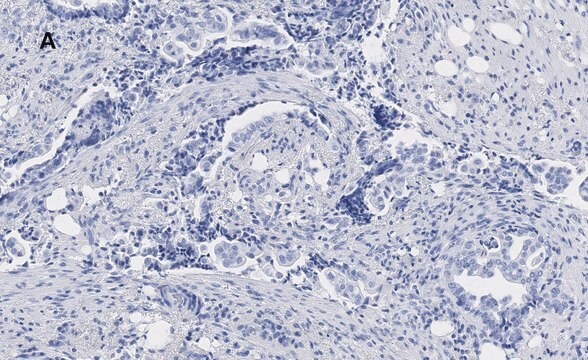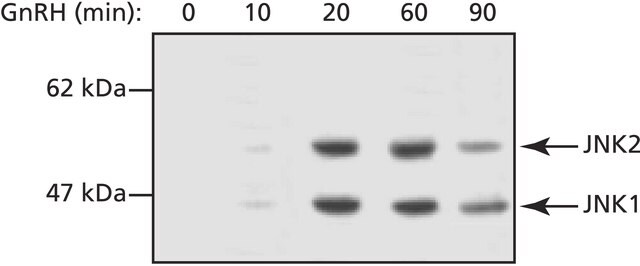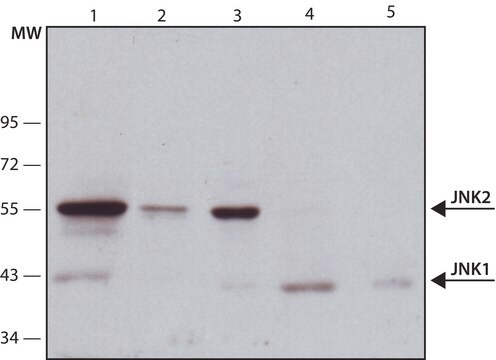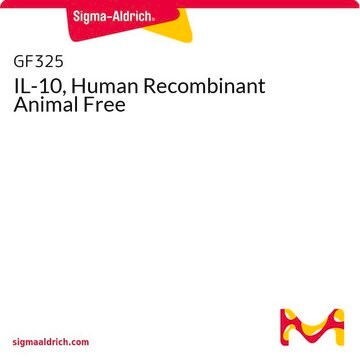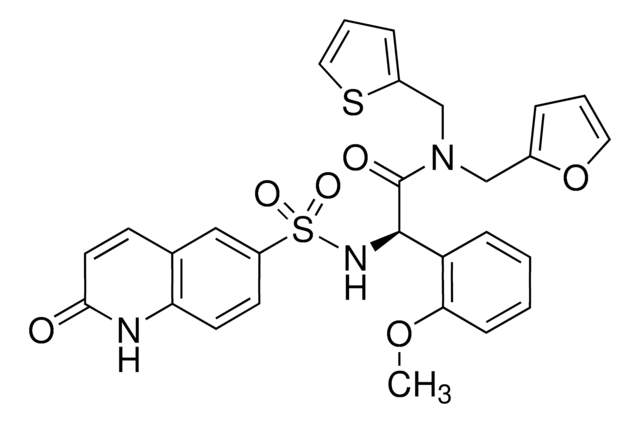Kluczowe dokumenty
J4644
Anti-phospho-JNK1/2 (pThr183/pTyr185) antibody produced in rabbit
affinity isolated antibody, buffered aqueous glycerol solution
Synonim(y):
Anti-phospho-SAPK (pTpY183/185), Anti-phospho-Stress Activated Protein Kinase (pTpY183/185), Anti-phospho-c-Jun N-terminal Kinase 1/2 (pTpY183/185)
About This Item
Polecane produkty
pochodzenie biologiczne
rabbit
Poziom jakości
białko sprzężone
unconjugated
forma przeciwciała
affinity isolated antibody
rodzaj przeciwciała
primary antibodies
klon
polyclonal
Postać
buffered aqueous glycerol solution
reaktywność gatunkowa
rat, human
metody
immunocytochemistry: 1:250
immunofluorescence: 1:250
immunohistochemistry: Assay Dependent
western blot: 1:200-1:2000 (using human 293 cells treated with UV radiation)
numer dostępu UniProt
Warunki transportu
wet ice
temp. przechowywania
−20°C
informacje o genach
human ... MAPK8(5599)
Opis ogólny
Immunogen
Zastosowanie
Działania biochem./fizjol.
Anti-phospho-JNK1/2 (SAPK) (pThr183/pTyr185 ) specifically recognizes the endogenous, active forms of JNK1 and 2 phosphorylated at threonine 183 and tyrosine 185.
Postać fizyczna
Oświadczenie o zrzeczeniu się odpowiedzialności
Nie możesz znaleźć właściwego produktu?
Wypróbuj nasz Narzędzie selektora produktów.
polecane
Kod klasy składowania
10 - Combustible liquids
Klasa zagrożenia wodnego (WGK)
WGK 3
Temperatura zapłonu (°F)
Not applicable
Temperatura zapłonu (°C)
Not applicable
Certyfikaty analizy (CoA)
Poszukaj Certyfikaty analizy (CoA), wpisując numer partii/serii produktów. Numery serii i partii można znaleźć na etykiecie produktu po słowach „seria” lub „partia”.
Masz już ten produkt?
Dokumenty związane z niedawno zakupionymi produktami zostały zamieszczone w Bibliotece dokumentów.
Nasz zespół naukowców ma doświadczenie we wszystkich obszarach badań, w tym w naukach przyrodniczych, materiałoznawstwie, syntezie chemicznej, chromatografii, analityce i wielu innych dziedzinach.
Skontaktuj się z zespołem ds. pomocy technicznej